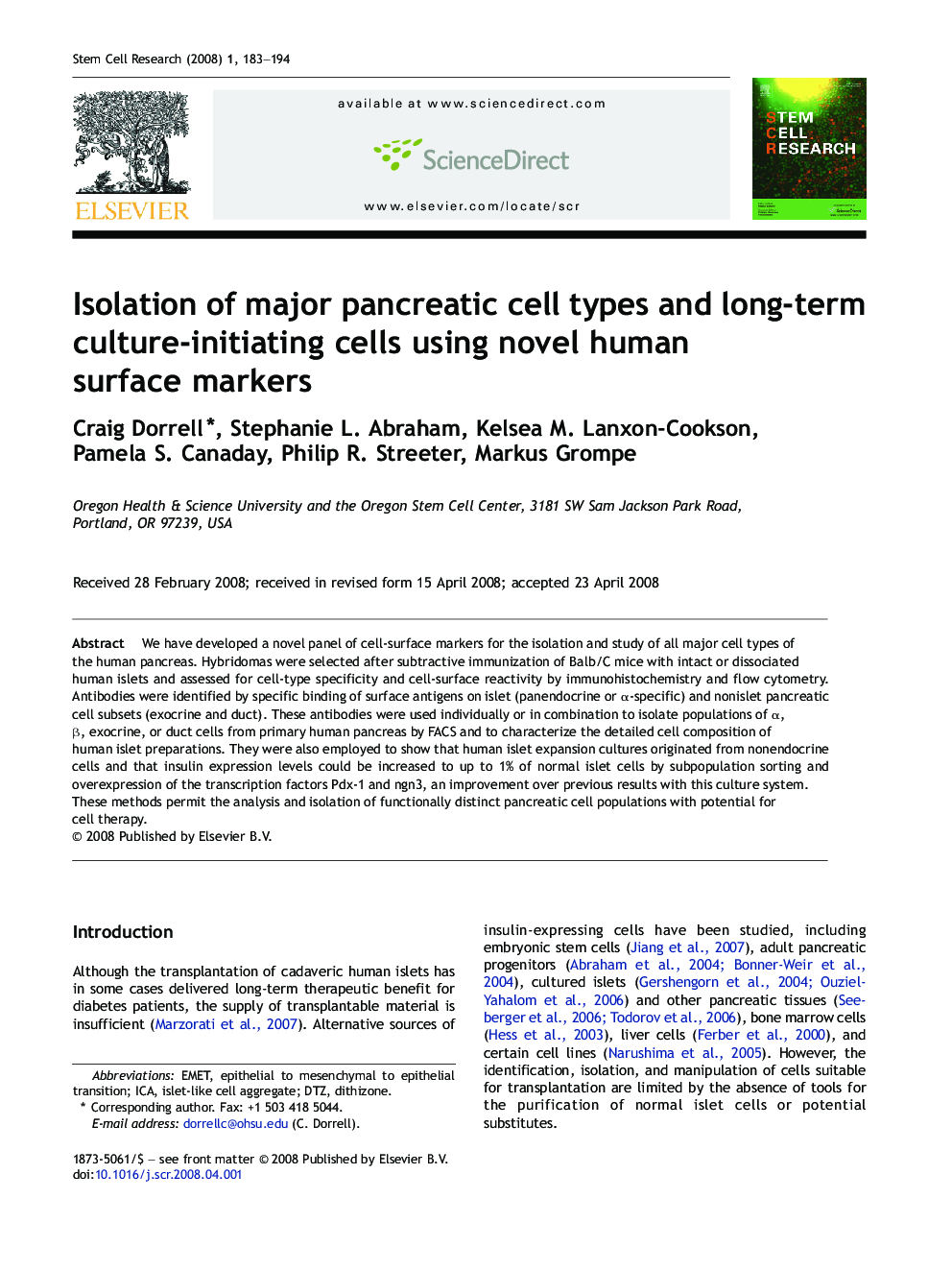| Article ID | Journal | Published Year | Pages | File Type |
|---|---|---|---|---|
| 2094431 | Stem Cell Research | 2008 | 12 Pages |
We have developed a novel panel of cell-surface markers for the isolation and study of all major cell types of the human pancreas. Hybridomas were selected after subtractive immunization of Balb/C mice with intact or dissociated human islets and assessed for cell-type specificity and cell-surface reactivity by immunohistochemistry and flow cytometry. Antibodies were identified by specific binding of surface antigens on islet (panendocrine or α-specific) and nonislet pancreatic cell subsets (exocrine and duct). These antibodies were used individually or in combination to isolate populations of α, β, exocrine, or duct cells from primary human pancreas by FACS and to characterize the detailed cell composition of human islet preparations. They were also employed to show that human islet expansion cultures originated from nonendocrine cells and that insulin expression levels could be increased to up to 1% of normal islet cells by subpopulation sorting and overexpression of the transcription factors Pdx-1 and ngn3, an improvement over previous results with this culture system. These methods permit the analysis and isolation of functionally distinct pancreatic cell populations with potential for cell therapy.
